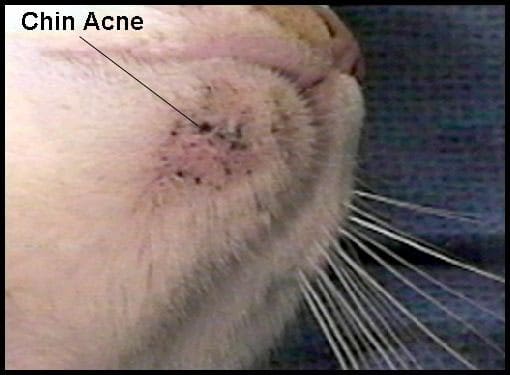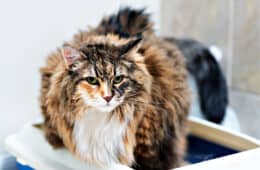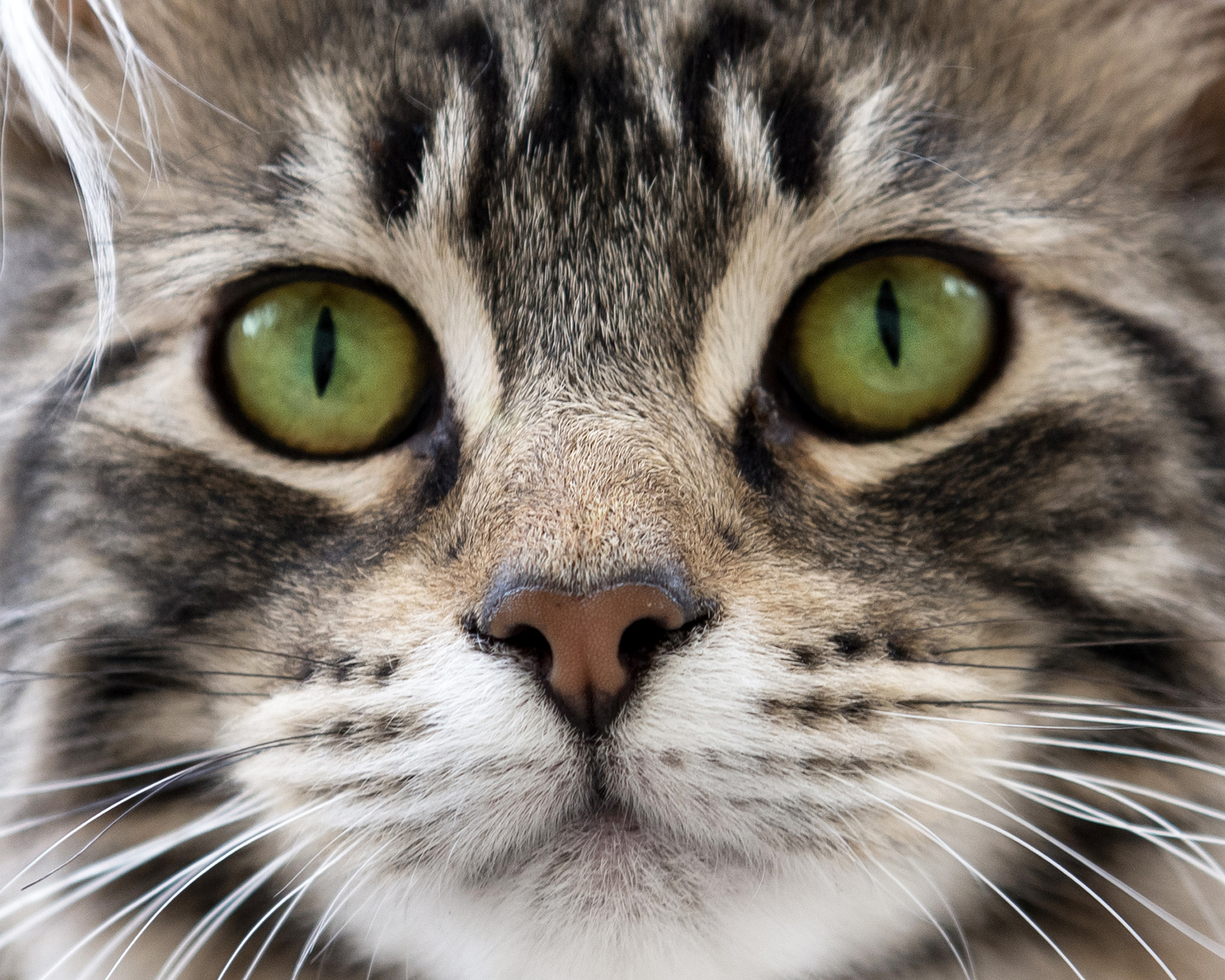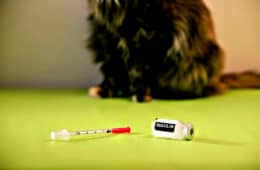Feline acne is a common but often misunderstood condition in cats. While it might seem alarming at first, understanding the signs, causes, and treatments can make managing this condition much easier.
In this article, we'll explore what feline acne looks like, when you need to worry, and what steps you can take at home or with your veterinarian's help.
Whether you're facing a minor case or a more severe situation, this guide aims to provide the essential information without overwhelming you. Let's take a closer look at what you need to know about feline acne.

Recognizing and Monitoring Feline Acne
Feline acne is a concern for many cat owners. This common issue might look serious, but in many cases, it's manageable.
Understanding what to look for and when to seek veterinary help can make all the difference. Here's a closer look at what feline acne is and how you can handle it.
SIGN UP FOR THECATSITE'S EMAIL UPDATES >
What It Looks Like
In most cases, feline acne goes away on its own or doesn't get worse. You might see small bumps or redness. As with human acne, the more you touch it, the worse it can get. So keep your hands off!
When to Worry
If the acne becomes severe, turns into ugly bumps, or starts to bleed, it's time to see a veterinarian. Hair loss on the chin might also occur.
This can happen when your cat rubs its face to relieve itching or from the acne itself.
Treating Feline Acne
Initial Veterinary Treatment
Your veterinarian should test for parasites, bacteria, and yeast. They might treat the acne with an antibiotic injection and recommend a medicated wipe for home use.
Potential Causes
Food allergies could contribute to acne. Have you switched foods lately? Try grain-free foods.
Use metal or ceramic dishes for feeding. Wash food bowls daily to prevent infection, as plastic dishes can harbor germs.
Persistent Acne Treatment
If the acne persists or worsens, daily antibiotics may be necessary. Liquid antibiotics are often easier to give at home.
Daily chin washes with medicated shampoo may also be part of the treatment. If your cat struggles, wrap it in a towel or recruit help to make the process easier.
Special Considerations for Therapy Cats
If your cat serves as a therapy animal, keep it at home if there's a bleeding chin.
Though not contagious, an open wound can lead to an infection. Wait until the sores heal before resuming visits.
Keep Your Cat's Skin Healthy: Understanding Feline Acne
Feline acne might seem alarming at first glance, but with proper understanding and care, it's often manageable. Remember, early recognition is key.
Monitor the situation, and don't hesitate to seek professional veterinary advice if the condition worsens. Keeping your cat's dishes clean, considering dietary changes, and following a vet-prescribed treatment plan can make a significant difference.
Embrace these guidelines, and help your cat live a happy, healthy life free from discomfort. Your feline friend is relying on you; let your care and attention pave the way to better skin health.
SIGN UP FOR THECATSITE'S EMAIL UPDATES >
*The picture in this article was originally posted on threads in our forums.
You may also be interested in:
Comments? Leave them using the comment section below. Questions? Please use the cat forums for those!
Note: We may get commissions for purchases made through links on this page.




4 comments on “Feline Acne [A Comprehensive Care Guide]”